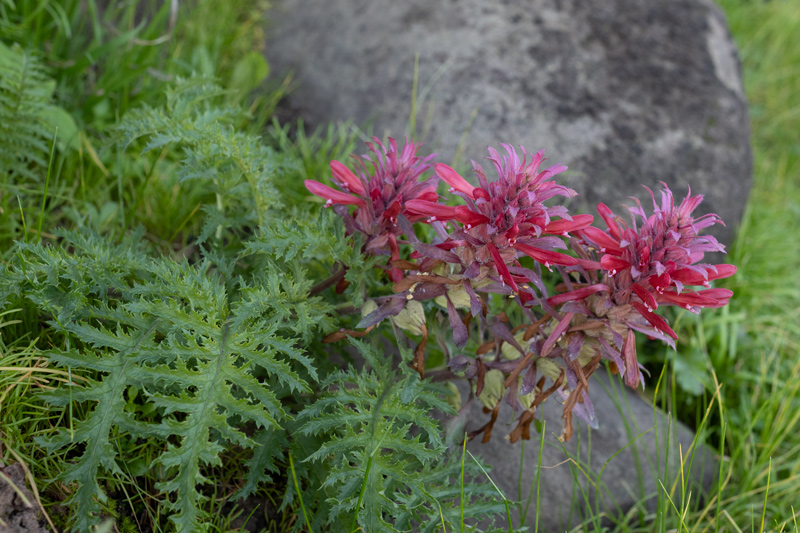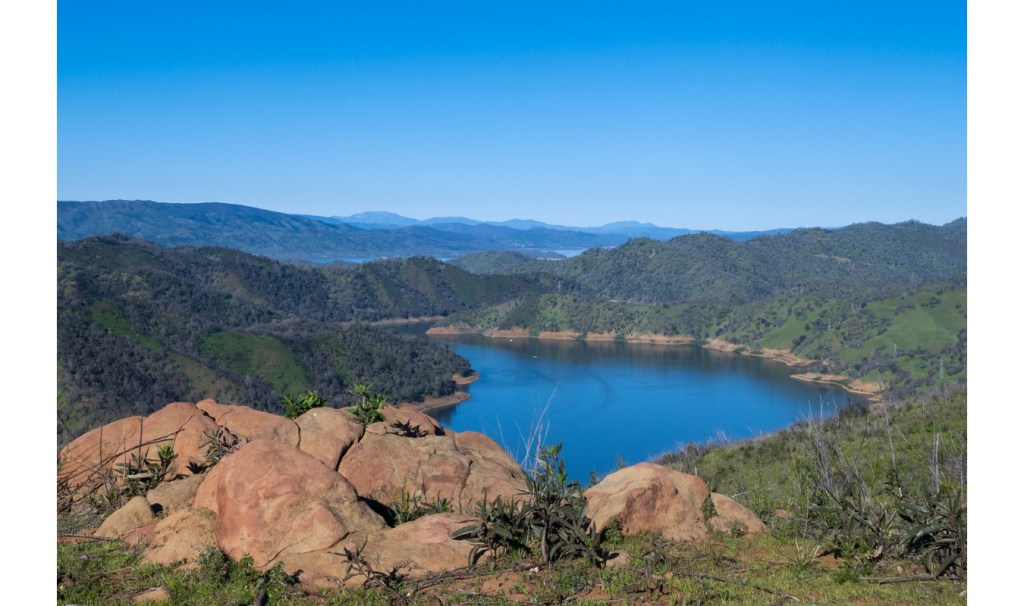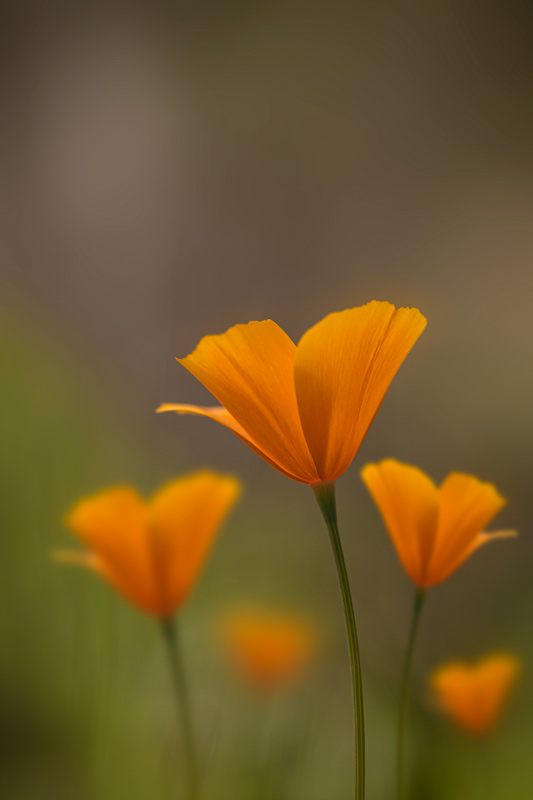Keeping up with my series of posts about photography destinations in the greater Sacramento area, I want to introduce my followers to the UC Davis Stebbins Cold Canyon Reserve. I consider it another hidden gem for (springtime) photography because it offers a lot of options for wildflowers, and I seldom see photographers there. Hikers, on the other hand, know about the place, so get there early to get a space in the limited parking lot! I went there last on the 22nd of January, when I took the featured photo. I was the first car in the parking lot at 7:45 am, but when I came back to the car, around 10:45, there were not parking spots left.
Location
The entrance to the preserve is on state highway 128. Pass the town of Winters in Yolo County and go in the direction of Rutheford. Past Markley Cove Resort, and right when the road starts winding uphill, look for the parking lot on the right-hand side of the road. It is about 20 minutes past Winters. Parking is free but there is a donation booth.
Photography
The Cold Canyon is an inland canyon of the California Coast Range. The approximately 6-mile loop trail, known as the Blue Ridge Trail, has two distinct portions that may be of photographic interest: a lower, relatively flat area along a temporary creek, and the ridge above.
On the lower portion of the trail, and beginning right at the parking lot, a plethora of wildflowers can be seen in the Spring. Worth of notice are the patches of Shooting Stars (Dodecatheon hendersonii), Foothill mule-ears (Wyethia helenioides), Blue Dicks (Dichelostemma capitatum), Tufted Poppy(Eschscholzia caespitosa), and Fiddleneck (Amsinckia intermedia) (see those above in the SLIDESHOW below. Photos taken in the spring of 2021).
There are many other wildflowers there. A complete list of the vascular plants of the reserve can be found here.
On the upper portion of the trail, the most common flower is the Indian Paintbrush (genus Castilleja, there are four species in the preserve), a member of the parasitic Broomrape family (Orobancaceae). These plants are hemiparasites, meaning that they derive energy from photosynthesis and also by sequestering nutrients from other plants. Despite being parasites for part of their lives, Castilleja plants rely on pollinators (usually hummingbirds) for reproduction.

The main attraction on the ridge, and a prize for those who can make it up there, is the view of Lake Berryessa (featured image). Ever since a humungous wildfire burned the entire reserve in the summer of 2015, the many views of the lake from the ridge are unobstructed.
A photography tip for those who want to photograph the landscape: Lake Berryessa is many, many miles distant. Additionally, to photograph the view, you must tilt your camera down. If you focus somewhere on the lake, most of the image will still be soft. A better approach is to find an object of interest in the foreground and focus on it. This will give you a sharp foreground, and the lake and the mountains behind will be only “acceptably” sharp. To make the featured picture, I focused on the foreground and used the narrowest aperture of my 24 mm lens, f/16. The photo was taken handheld since there was a lot of light, giving me a shutter speed of 1/350 with ISO 400. (Some wildflowers in the foreground and a line of clouds in the background would have helped, but this is what I had when I was up there last.)
Both landscape and wildflower photography benefit from a partly cloudy day and more diffused light. This is also true for the Stebbins Cold location
A word of caution
Only photographers in good physical shape should attempt going up the ridge. The trail is very steep, and rocky, making it especially hard on the knees, hips, and ankles. If you do attempt the hike up, make sure you take plenty of water and a snack, a hat, and sunblock. The trail is completely exposed to the sun. If you are not in good shape or if you have problems in your joints, there is nothing wrong with staying on the lower portions of the trail photographing the beautiful wildflowers and enjoying the cool and quiet of the creek’s bed. I don’t recommend taking a tripod up to the ridge, but if you take a monopod, you can also use it as a hiking pole when you walk over the rocky path. For a casual photo of the lake from above, for personal use or social media upload, an iPhone will be perfectly fine.
The Stebbins Cold Canyon is an interesting place for local photography, mostly in the spring. Photographers can get the double benefit of endurance training and photographic opportunities when they chose to do the loop trail and climb up the steep ridge. It’s best to go on an overcast or partly cloudy day.
______________________________
Wall Art landscapes and miscellaneous
________________________________






Leave a reply to Louis Dallara Fine Art Photography Cancel reply